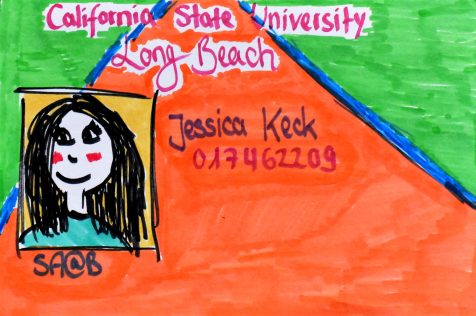Welcome to Week B3
aka “Week 6” for the rest of the campus
This Week
- Class: SOA Galleries – see below
- OC Artist: Maika Elan
- Activity: Landscapes with a Corpse or Environmental Portraits. You do not have to do both! Take a look at the 2 activity briefs and choose whichever one you prefer.
Galleries this Week
This week you only have to come to class once, your choice of Monday or Wednesday. You can use the time the other day to work on your Landscapes with a Corpse or Environmental Portrait project.
- Whichever day you do come, when you arrive, find 1 or 2 classmates to talk with. Your group of 2 or 3 can look at the art in the galleries together.
- Take inspiration from one of the gallery shows, and draw your ID Cards so that the 2 or 3 cards connect into something larger. (you don’t necessarily have to do your essay about that artist)
- Discuss with each other the idea of having a conversation with an artist to learn about their work. Come up with 3 questions you’d like to ask an artist to better understand their ideas and their process of art making.
- When you’re ready, find me in the Gallery Courtyard. Your group can present your ID card diptych or triptych (2 or 3 panel artwork) and then explain your 3 questions to me.

BeachBoard Dropbox
A student asked if it is possible to submit a revised essay before the 11:59 pm Sunday deadline? Yes! The dropbox is set up to accept as many submissions as you like. It will throw away all but the most recent one. So, if you find a typo or want to change something, just go ahead and submit a new draft. The earlier version will be deleted.
Do I have to “like” it?
I received an email question this week asking if, in your artist essay, you have to “like” the art? The student included with the email a photo that they thought was more beautiful than the work they’d seen in the SOA Galleries.
You are definitely not required to “like” anything.
However, “like” and “don’t like” are not generally helpful ways to think about art.
When you visit the galleries you can look at all the work on display and see what you’d like to talk about. If you “like” Artist C’s work better than Artist B, you might choose to write about Artist C instead.
Or not… you might also say… I’m not sure I really get what Artist B is going for in their work. Maybe my conversation this week should be with them so I can learn some new aspect of “Visual Language.” You probably would not ask them,
I don’t really get your stuff, can you tell me what it’s supposed to be or why you like it?
But you could ask a more open-ended question like,
Can you talk a little about the ideas you’re exploring in this work?
Also, often (not always, but often) the Artist’s Statement on the gallery wall will give you a good start on understanding what the artist is thinking about with this exhibition. For sure read the statement and then you can form more specific questions about the work. It’s also a good idea to take a picture of the statement with your phone so you can read it again later to help answer questions you might have.
As for the “more beautiful” photo that was attached to this question, the photographer who took the “more beautiful” photo was going for something very different from what the SOA Artist was going for. I could tell you that Shaquille O’Neal is not as beautiful as Karlie Kloss, but that’s kind of pointless to say, isn’t it? Each of them is about a variety of different things, and to compare them for “more beautiful” doesn’t make sense. They are both interesting, but for different reasons. If you choose to write about Shaq, well, no, he isn’t as beautiful as Kloss, but that’s not a very good Shaq essay. It’s not a very helpful insight into Shaq.
Try to think about, try to talk about, what is going on in your artist’s work. Be sure to discuss this with them at the galleries during the week. And as I’ve described in the past, and on the essay template, you can start talking about the formal elements in Paragraph 2 as a way to start exploring a work. That can give you access to the work, and then combine your conversation with the artist in Paragraph 3 to talk about the Ideas s/he is exploring.
Welcome Back
I just received this Welcome Back vlog from CSU Chancellor Timothy White, and thought I’d share it with you!



Comments? Questions? What great art did you see, make, or experience today?